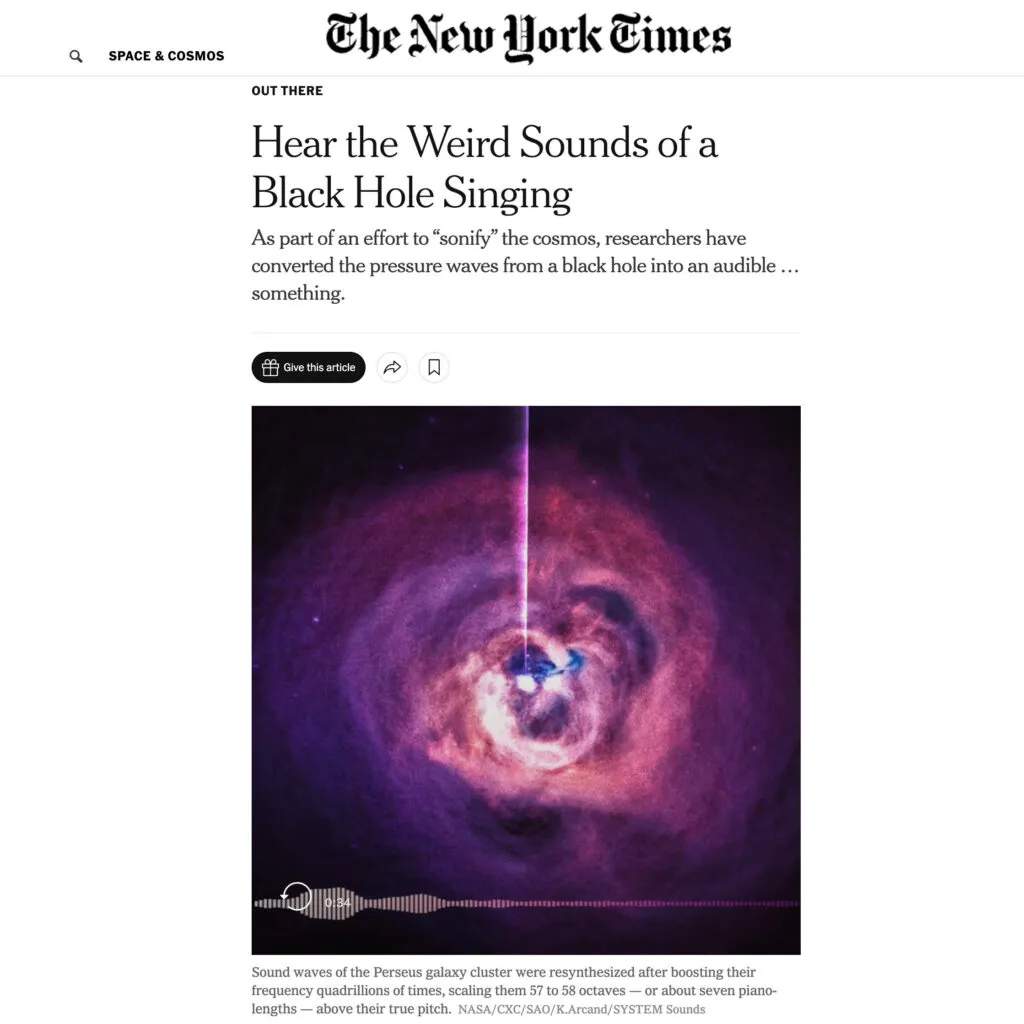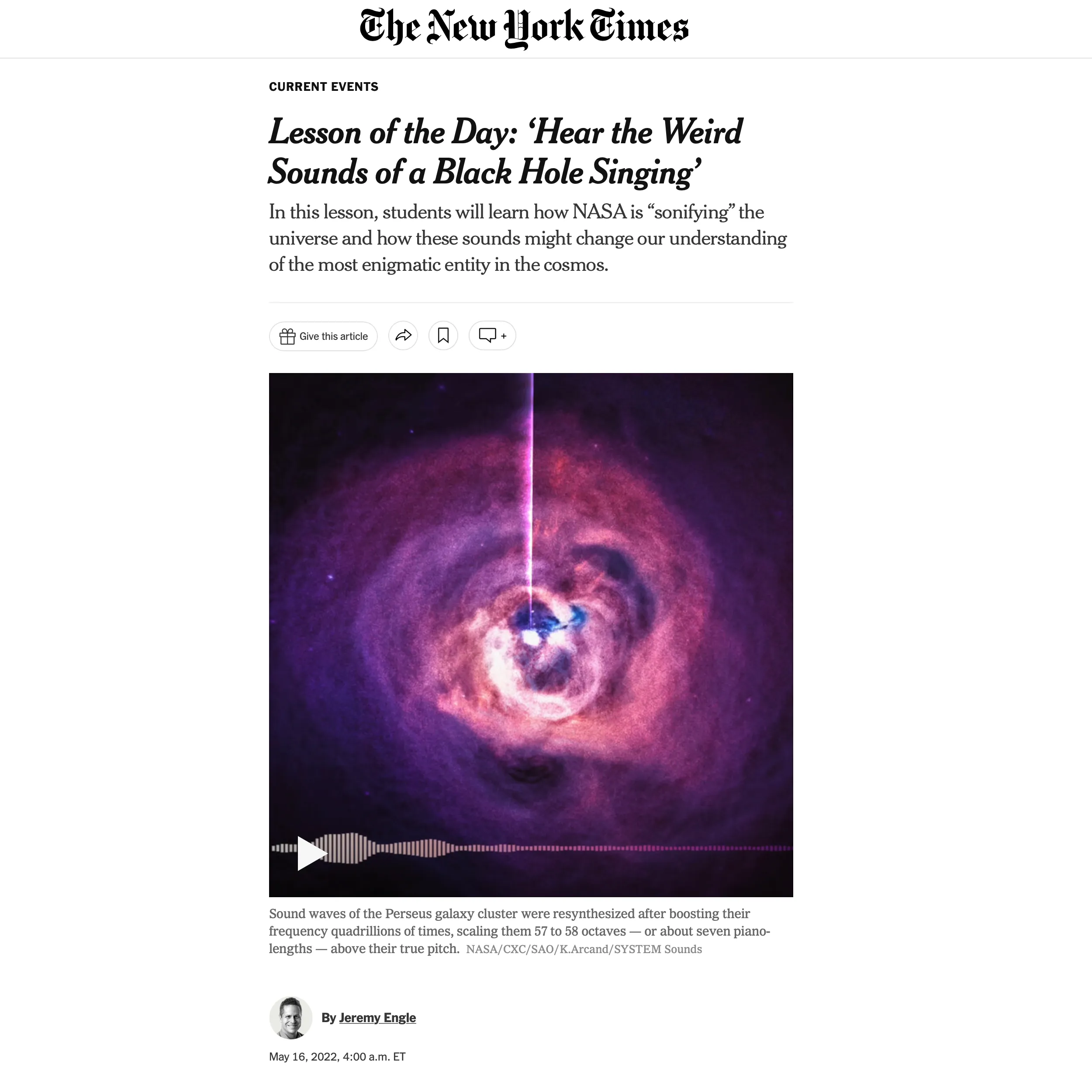Black Hole Sound
The lowest pitch sound waves ever discovered have been sonified for the first time.
In 2003, sound waves were a detected in x-ray images of the hot gas surrounding the Perseus cluster. Their pitch is a Bb, about 57 octaves below middle C making them the lowest frequency sound waves ever discovered. The period of these waves is about 10 million years while the period of middle C is about 4 milliseconds. We have extracted the waves from the image and re-synthesized them, bringing them into human hearing range. To make them more clearly audible, we have increased their true pitch by 57 and 58 octaves (144/288 quadrillion times their true frequency).
The waves are triggered by a central black hole and propagate outwards. In this radar-like scan (clockwise, starting at 12 o’clock) you can hear the waves that were emitted in different directions. They are strongest and clearest around 2 and 11 o’clock. This technique also sonifies periodic non-sound features, such as density variations and irregularities in the gas (i.e. not pressure waves) but the actual sound waves are present and audible.
Extracting these waves was tricky! Here’s the technical info. First, we needed to account for the fact that we are looking at the wavelengths of the sound waves but want to extract wave frequencies. The wave sound speed changes with distance from the center which distorts the wavelengths. We used the radial profile of the gas sound speed to partially correct for this. We then filtered the image to help isolate the known frequency of the waves and applied a radial Fourier transform to extract periodic signals. After shifting the frequencies into the human hearing range, these signals were then re-synthesized using two types of additive audio synthesis. Maybe we’ll write up all the gory details in a paper someday :).
Our black hole sonification was featured in the New York Times! A week later, they also published a lesson plan for kids based on the sound.

